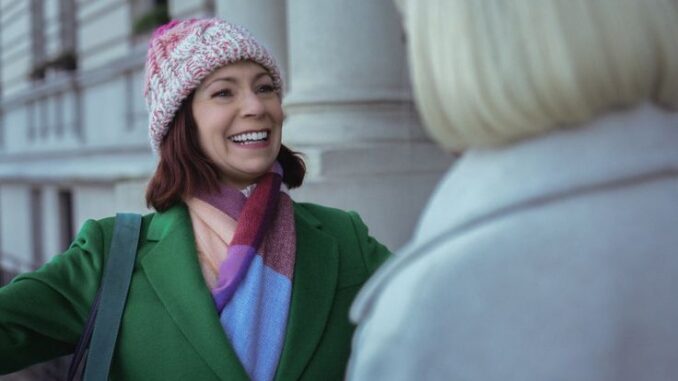
The Anatomy of an Outcry: Elsbeth’s Bags and the Fan Divide
In the vibrant, sometimes dizzying, world of television, few things ignite a fandom’s passionate scrutiny quite like a beloved character undergoing a significant stylistic transformation. Such was the case with Elsbeth Tascioni, the unconventional, sharp-witted attorney-turned-investigator, whose recent fashion overhaul – most notably, her sudden affinity for gargantuan, architectural handbags – sent shockwaves through her devoted audience, cleaving them into two distinct, vocal camps. It wasn’t just a change of clothes; it was a perceived shift in her very essence, sparking a debate that went far beyond mere aesthetics.
From her initial appearances, Elsbeth’s wardrobe was an extension of her delightfully off-kilter personality. Her brightly colored, often mismatched ensembles, while certainly eye-catching, always felt organic to her quirky charm. They were a visual manifestation of her brilliant, unconventional mind, a testament to a woman who saw the world in her own unique hues and refused to conform. Then came the “overhaul.” Suddenly, the bags appeared – not just large, but monumental. These weren’t mere accessories; they were boulder-like satchels, structured carryalls, and gravity-defying totes that seemed to possess their own gravitational pull. Her clothes, too, followed suit, becoming bolder, more aggressively chic, with sharper lines and often an almost avant-garde sensibility.
For one faction of fans, this evolution was nothing short of a triumph. “Finally!” they cheered across social media platforms. They saw a woman staking her claim, embracing her eccentricity with an even more defiant flourish. To them, the oversized bags weren’t an impractical affectation but a symbol of Elsbeth’s growing confidence and agency. “She’s a detective now, she needs to carry all her secrets and sleuthing tools!” one fan argued, seeing practicality in the absurd. Others viewed it as a brilliant artistic choice by the costume department, a visual metaphor for Elsbeth’s expansive personality and her tendency to carry more than meets the eye. These admirers lauded the bold silhouettes and vibrant hues, declaring them a fitting update for a character who refuses to be pigeonholed by age or expectation. They saw her as a stylish, powerful figure, unafraid to make a sartorial statement that matched her formidable intellect. The bags, to them, were not distractions but sartorial exclamation points, underscoring her unique presence in every scene.
Yet, an equally vocal and passionate contingent recoiled from the transformation with a mixture of bewilderment and indignation. For these traditionalists, the bags were not just impractical but actively distracting, verging on caricature. “It’s like she’s wearing the plot on her shoulder!” lamented one exasperated viewer, arguing that the gargantuan accessories pulled focus away from Elsbeth’s sharp dialogue and keen observations. They felt the original Elsbeth, with her slightly awkward yet endearing style, had been sacrificed at the altar of high fashion. Her original quirkiness, they argued, felt authentic, an organic outgrowth of her character. This new, hyper-stylized look, particularly the architectural bags, felt forced, an attempt to make her “trendy” rather than allowing her inherent individuality to shine. Some even interpreted it as a sign that the showrunners were losing touch with the character’s core, mistaking ostentation for evolution. “The charm was in her comfortable oddity,” a Reddit user posted, “not in looking like she’s hauling a small suitcase to every crime scene.”
The division wasn’t merely about personal taste; it delved into deeper questions about character integrity, visual storytelling, and the delicate balance between innovation and audience expectation. Does a character’s look need to evolve with their narrative arc? Or should certain iconic elements remain untouched, serving as anchors for loyal viewers? For the “pro-bag” camp, Elsbeth’s fashion overhaul signified growth, a visual cue that she was embracing her new role with unbridled confidence. For the “anti-bag” faction, it felt like a betrayal, an unasked-for intervention that stripped away a part of what made Elsbeth uniquely Elsbeth.
Ultimately, the oversized bags and the subsequent fashion overhaul illustrate the profound investment fans have in their beloved characters. When a stylistic change sparks such a fervent debate, it underscores that for viewers, a character’s wardrobe is never just about fabric and stitching; it’s an integral part of their identity, a silent narrative that speaks volumes. Whether one sees Elsbeth’s new look as a bold artistic statement or a regrettable misstep, the conversation it ignited is a testament to her enduring power – a character so compelling that even her accessories can become a battlefield of passionate opinions. And perhaps, in the cacophony of the divided fandom, Elsbeth herself would find a peculiar, perplexing joy.
